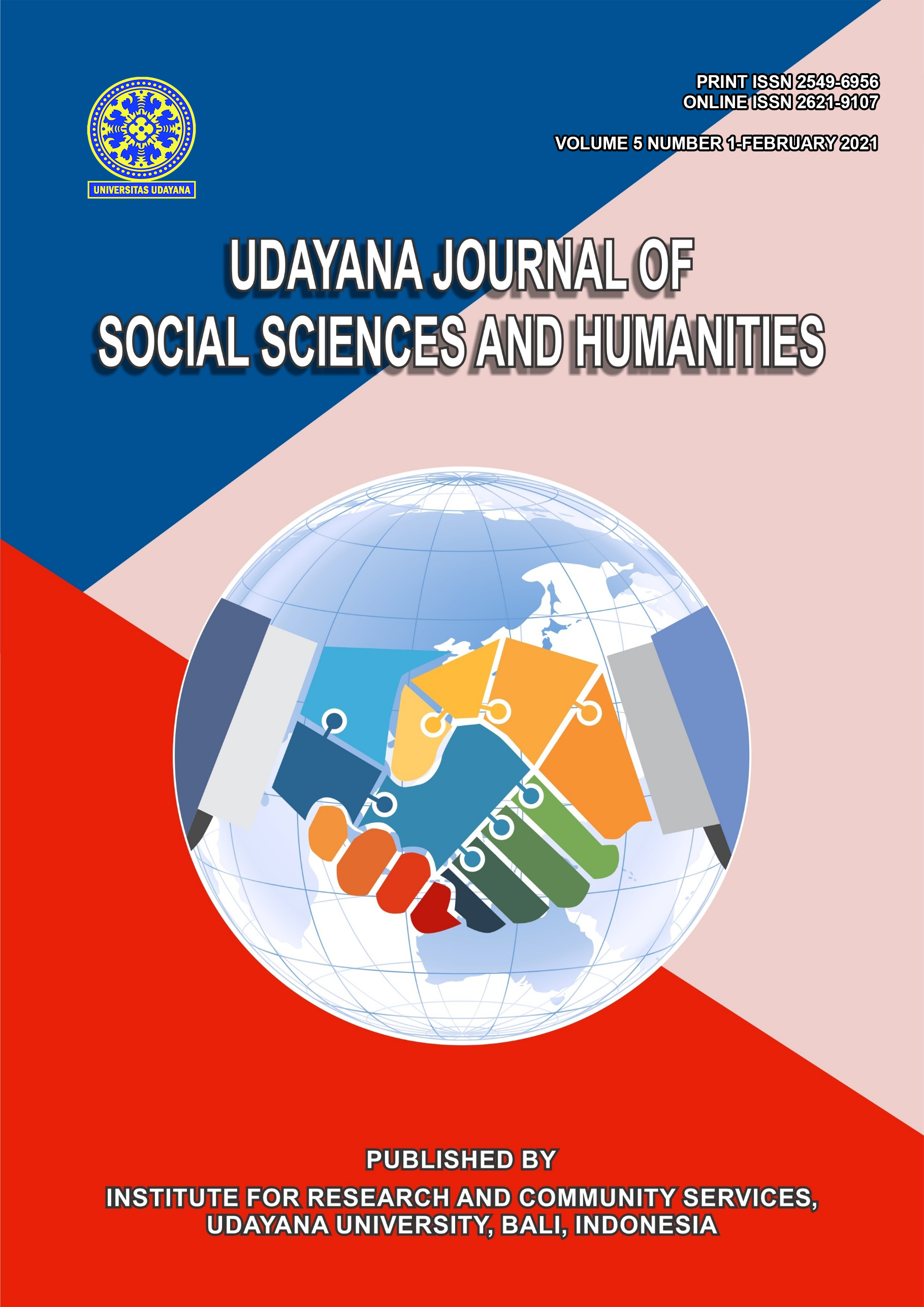Morphology of House Pattern in Tenganan Dauh Tukad Village, Karangasem
Abstract
Traditional Settlements Tenganan Dauh Tukad Traditional Village, Karangasem regency, has a uniqueness of traditional dwelling patterns that become a local character of the region. However, along with the development of tourism in this village, the traditional settlement is not only a pride, but also the object of commodification. This is an interesting phenomenon where on the one hand, people try to maintain their traditional residential identity to attract tourists visiting, but, on the other hand, they change their dwelling as a tourism facility. The change is a challenge and a pressure for maintaining the traditional configuration as an identity. This is a phenomenon of conflict in the development of a cultural tourism area. On the one hand, tourists expect a natural and original nature and culture. On the other hand, society and culture change as the society interacts with the outside culture and the desire to accommodate the needs of the visiting tourists. Therefore, the purpose of this study was to investigate the paradoxical phenomenon of changes in the morphology of residential patterns in Tenganan Dauh Tukad Village and explore the conflict between conservation of traditional housing character and tourism demand. By conducting field studies (measurements), of selected stratified random sampling houses, and interviews, to examine the impact of changes on values ??and their meanings, this study will discuss changes in the physical configuration, meanings, and values ??of a traditional house. This research will explore the original roles and meanings of altered housing that can still be maintained and the new roles and values ??contained in the new configuration. In this study will also discuss the impact of new values ??on the meaning and value of the original configuration. With the identification of the morphologic character of the residential pattern, it is expected to be a model of change and provide an appropriate perspective for the community, the government and the tourism actors in transforming the traditional housing in Tenganan Dauh Tukad Village, Karangasem Regency.
Downloads
References
2 Clifford, J (1994) The predicament of culture: twentieth-century ethnography, literature, and art, Harvard University Press, Cambridge.
3 Covarrubias, M (1974) Island of Bali. Kuala Lumpur: Oxford University Press.
4 Derek & Japha, V (1991) ‘Identity through detail: an architecture and cultural aspiration in Montagu, South Africa, 1850-1915’, TDSR, vol. II, pp. 17-33.
5 Dharmayuda, IMS (1995) Kebudayaan Bali: pra Hindu, masa Hindu dan pasca Hindu. Denpasar: CV Kayumas Agung.
6 Dwijendra, NKA (2008) Arsitektur Rumah Tradisional Bali, Berdasarkan Asta Kosal Kosali, Denpasar: Udayana University Press.
7 Dwijendra, NKA (2009) Arsitektur Kebudayaan Bali Kuno, Denpasar: Udayana University Press.
8 Eiseman Jr, FB (1989) Sekala and niskala: essays on religious, ritual and art, vol. I, Periplus Editions, Singapore.
9 Ferschin, P & Gramelhofer, A (2004) ‘Architecture as information space’, Proceedings of the Eighth International Conference on Information Visualisation (IV’04).
10 Hobart, A, Ramseyer, U & Leemann, A (2001) The people of Bali. Massachusetts: Blackwell Publishers Ltd.
11 Hall, S (1990) ‘Cultural identity and diaspora’, in J Rutherford (ed), Identity, community, culture difference, Lawrence and Wishart, London, pp. 222-237.
12 Hobart, M (1978) ‘The path of soul: the legitimacy of nature in Balinese conceptions of space’, in G Milner (ed.), Natural symbols in South-East Asia, School of Oriental and African Studies, London, pp. 5—28.
13 Hoben, A & Hefner, R (1991) ‘The integrative revolution revisited’, World Development, vol. 19, no. 1, pp. 17-30.
14 Hobsbawm, E. (1983) ‘Introduction: inventing traditions’, in E Hobsbawm & F Ranger, (eds), The invention of tradition, Cambridge University Press, Cambridge, pp. 1–14.
15 Kagami, H (1988) Balinese traditional architecture in process, Inuyama: the Little World Museum of Man.
16 Lozanovska, M (2011) ‘Holy days after migration’, 2nd International Conference on Intangible Culture, Green Lines Instituto, Barecelos, pp. 459-469.
17 Mantra, IB (1993) Bali masalah sosial budaya dan modernisasi. Denpasar: Upada Sastra.
18 Nordholt, HS (1986) Bali: colonial conceptions and political change 1700-1940 from shifting hierarchies to ‘fixed’ order, Rotterdam: Erasmus.
19 Picard, M (1996) Bali: cultural tourism and touristic culture. Singapore: Archipelago Press.
20 Poerwadarminta, WJS (1989) Kamus Besar Bahasa Indonesia. Jakarta: Balai Pustaka.
21 Proshansky, HM et al. (1983) ‘Place identity: physical world socialization of the self’, Journal of Environmental Psychology, vol. 3, pp. 57-83.
22 Putra, IDGADP (2015) ‘The impact of tourism on the transformation of the tradisional Balinese house, unpublished PHD thesis, Melbourne: Deakin University Australia.
23 Shils, E (1971) ‘Tradition’, Comparative Studies in Society and History, vol. 13, no. 2, Special Issue on Tradition and Modernity, pp. 122-159.
24 Swellengrebel, JL (1984) Introduction, in JL Swellengrebel (ed), Bali: studies in life, thought, and ritual, Foris Publication Holland, Nethelands, pp. 1-76.
25 Wikstrom, T (1995) ‘The home and housing modernization’, in DN Benjamin, The home: words, interpretations, meaning and environment. Avebury: Aldershot.
26 Wood RE (1993) ‘Tourism, culture and the sociology of development’, in K Hitchcook & Parnwell (eds), Tourism in South-East Asia, Routledge, London, pp. 48-70.






